The Best 200ish IEM you (probably) have never heard of!
+ Good fit, albeit insertion a bit deep
+ Good build
+ Good cable
+ Decent accessories
- Could use more upper-treble
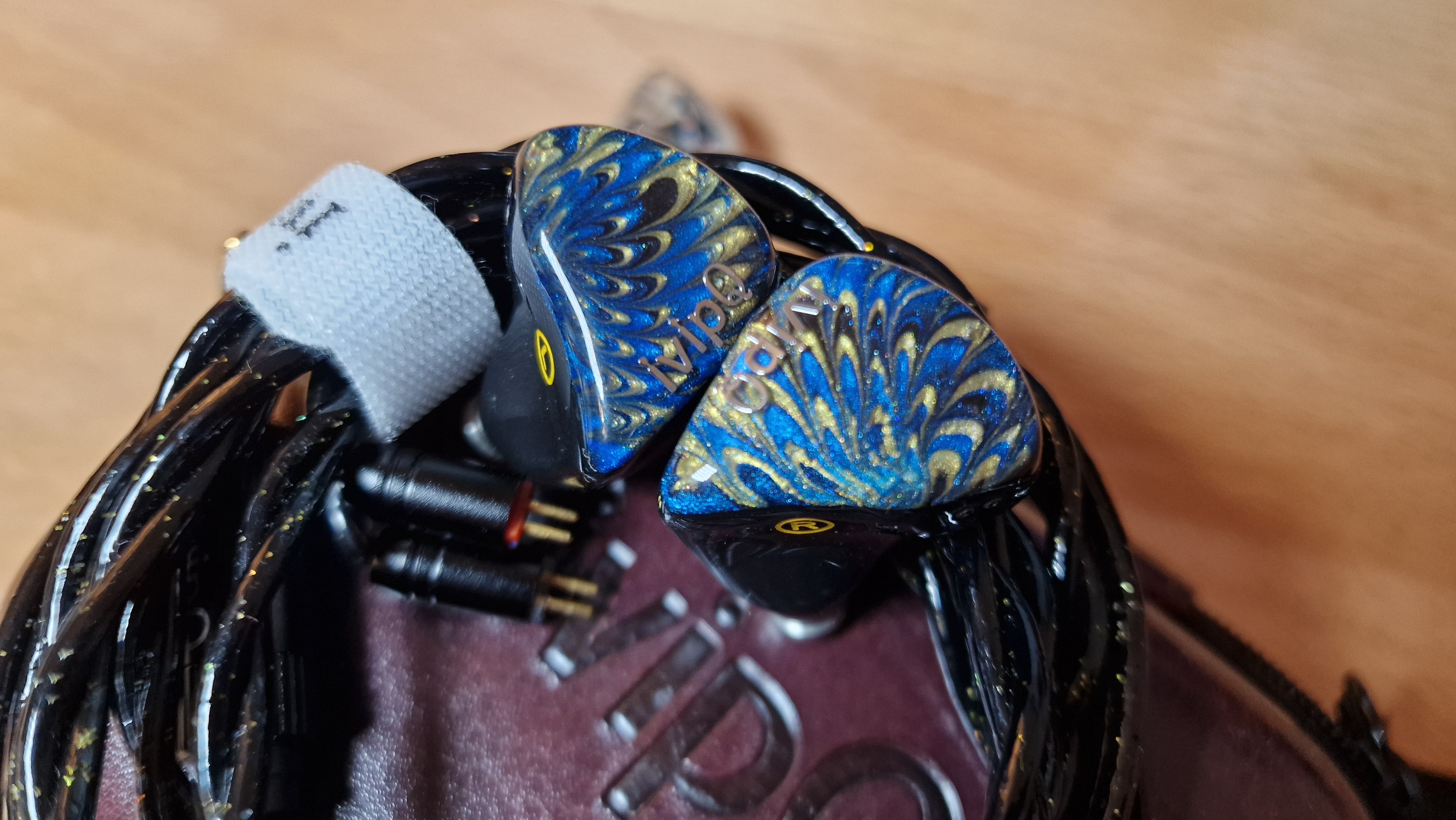
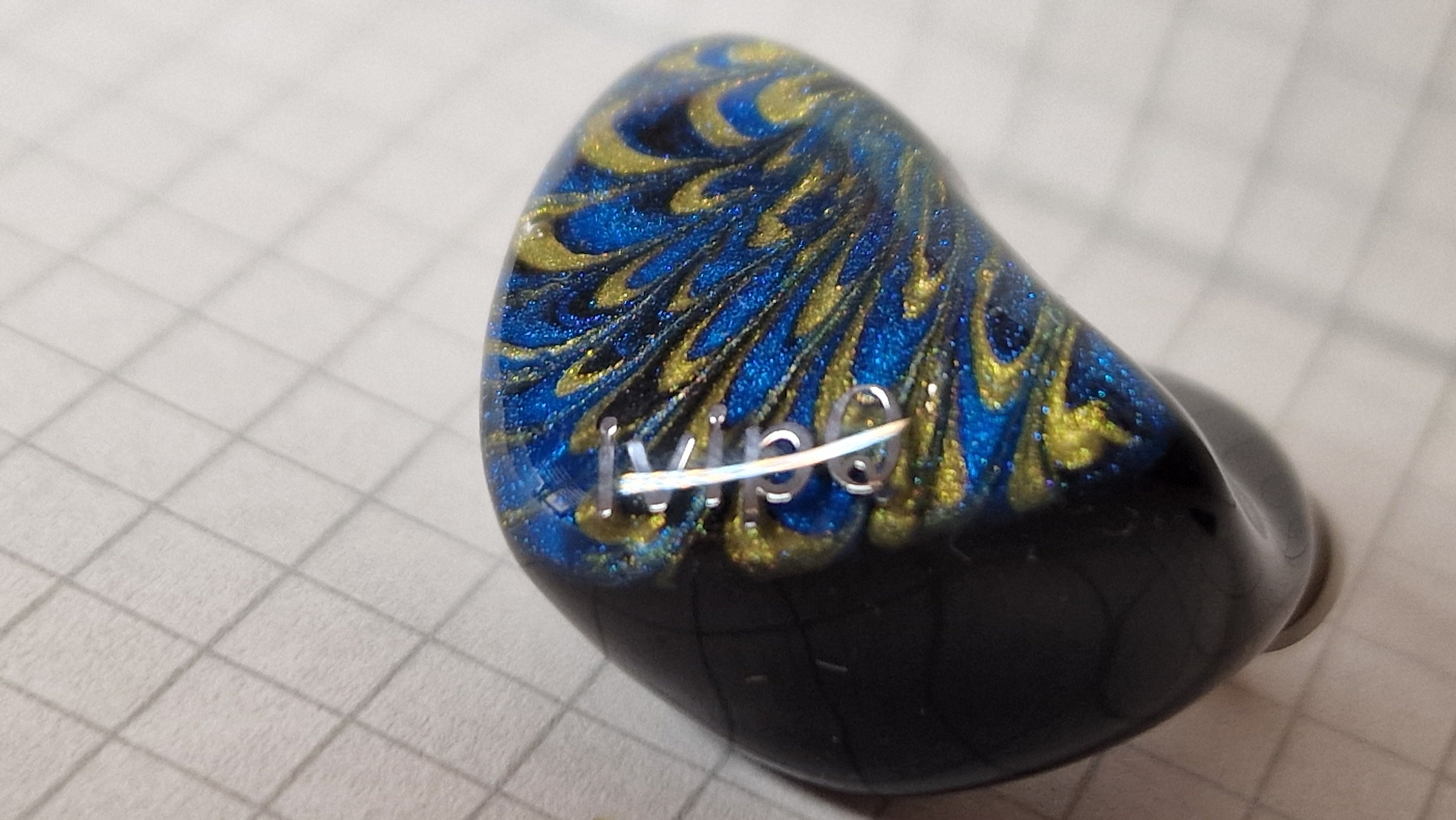
Packaging and Accessories
Similar sketchy but not as bad as the HS10, the Phoenixia comes in a box that is only labled with “ivipQ” and their profile on the back as well as two sticker on the back saying “Phoenixia” and “10mm bio-diaphragm, 1DD+6BA”. This again is a bit… Sus at best.Opening the box reveals the exact same carrying case as the HS10, now coated in fake-leather though which is ok: it is sturdy enough and the zipper moves smoothly enough, just struggling a bit on two corners. Inside is a net for your accessories of which we get: a carrying case for the ear-tips and two times S, M and L ear-tips. One set is the random silicone ones you also get e.g. with Penon or LZ audio and these generally are good ones even though the silicone is on the thinner side of things. The other three are Xinhs/ivipQs own tips on which I’ll have a separate video later. In short, there are again very situational and similar to the Tang Sancai wide… Just a bit better.
Other than that you get the cable and that’s it.
For 200ish bucks, I think this is definitively not enough and I wish the carrying case would be a bit better and there would be more ear-tips provided.
IEM Build
Similar to the HS10, the Phoenixia used a semi-custom resin shell. However, unlike the HS10, the Phoenixia has a metal nozzle and the overall-shell-shape is more contoured which makes it look a bit smaller, which it isn’t in real life. Also, the shell here seems to be slightly thinner, making the IEM come off as a bit lighter.The nozzle seems to be glued in well as far as I can tell and the mesh protecting it too.
However, I wish the pressure hole near the connector would have protection: it is a bit too big to not have a mesh covering it, so dust and small dirt can come inside. Meaning, be careful when you transport this IEM!
And last but not least, there is a yellow printed and in the shell integrated R/L indicator here that is very well visible and the connector itself is not color-matched but seems to be integrated well.
The style isn’t really my thing, as it imitated peacock feathers or phoenix scales (?), but at least it looks unique enough.
Overall the IEM is well built and I have no issues with it outside the pressure hole where I wish they would have integrated a mesh for protection.
Cable
As stated in my HS10 review, where I really liked the cable, Xinhs is known/comes from IEM cables. And the Phoenixia also shows that: is uses two thicker but not thick cores that are twisted evenly and are pretty smooth overall. Styling wise, they went for slightly shimmery black with golden particles inside. This looks unique and does fit the IEM with the golden particles inside the faceplate. In terms of usability, the cable is very good, near tangle free and non-microphonic. Also the strain-release at the plug actually works! The plug itself is a bit too smooth and the texture placed at the top and bottom of the plug doesn’t really help to grip the cable. But ok, it still isn’t as slippery as polished aluminium plugs I have had. The splitter follows this exact optic, same as the chin slider. The latter unfortunately has a bit too little friction and therefore doesn’t really stay in place.And last but not least the ear-hooks are medium-thick rubberized and not too springy. Unfortunately, the bending radius is again a tad small, but in comparison to the HS10 definitively not as small. As 2-pin termination here, they utilize a black aluminium shell with red R indicator at the bottom.
All in all the cable is again very good with only minor improvement potential.
Comfort & Fit
As in my last reviews, I did list the dimensions and specs of the Quintet my table of IEM measurements (which included the dimensions, some specs as well as the frequency response measurement): https://docs.google.com/spreadsheets/d/140ptVfmNcFF2ItPFMi_QEqm_J1iilu3EgUZ9YyNdX50/edit?usp=sharing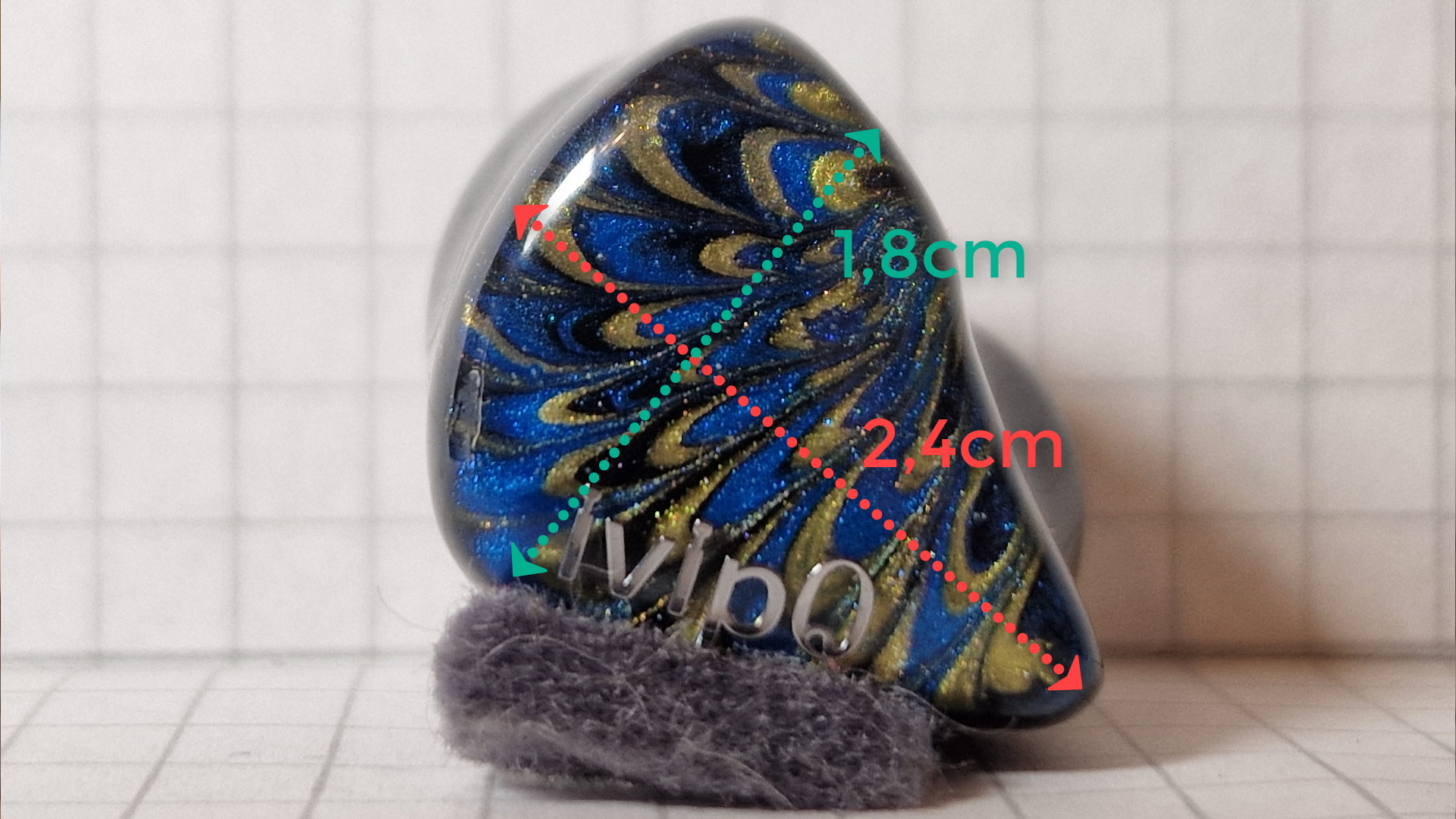
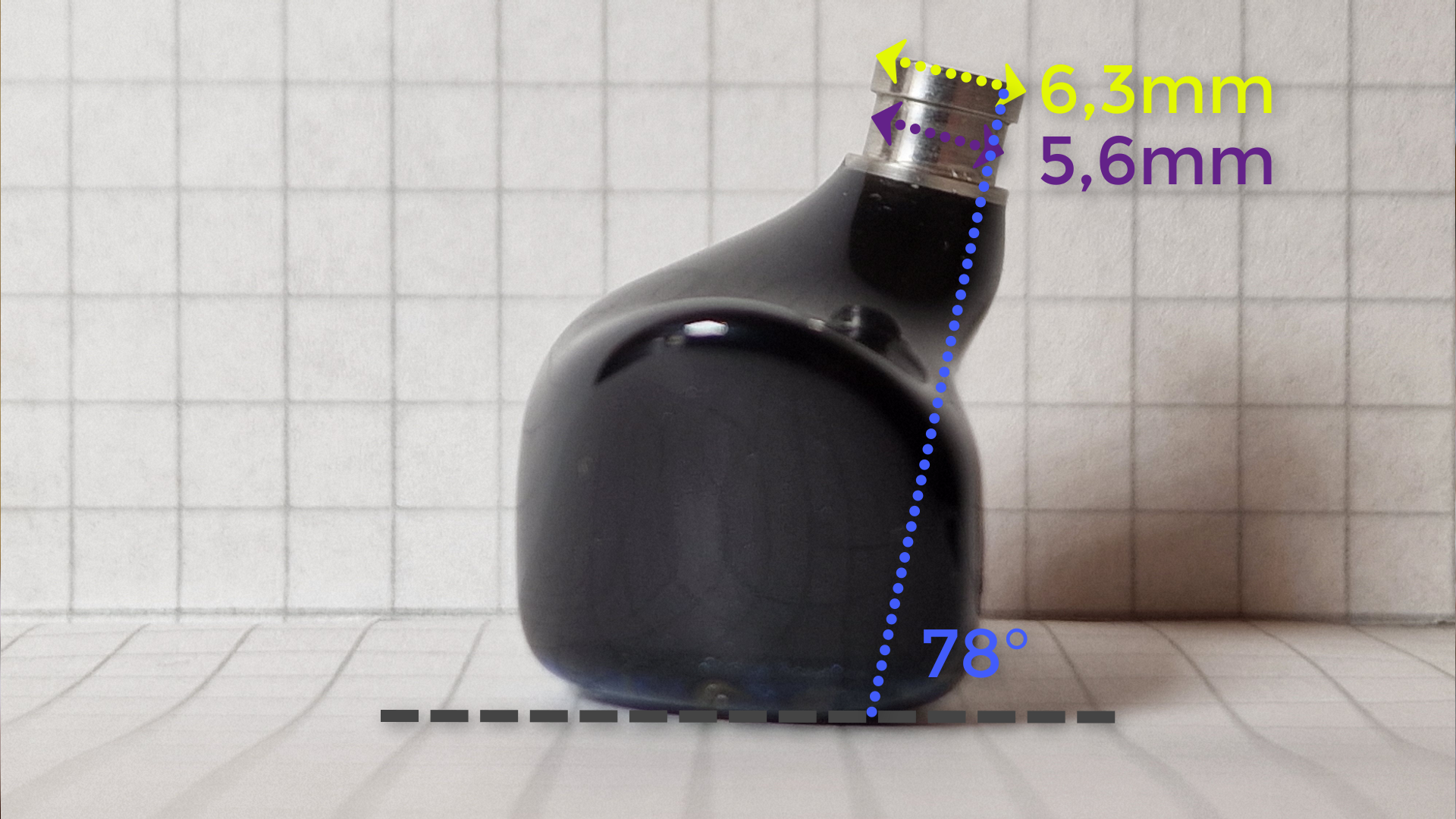
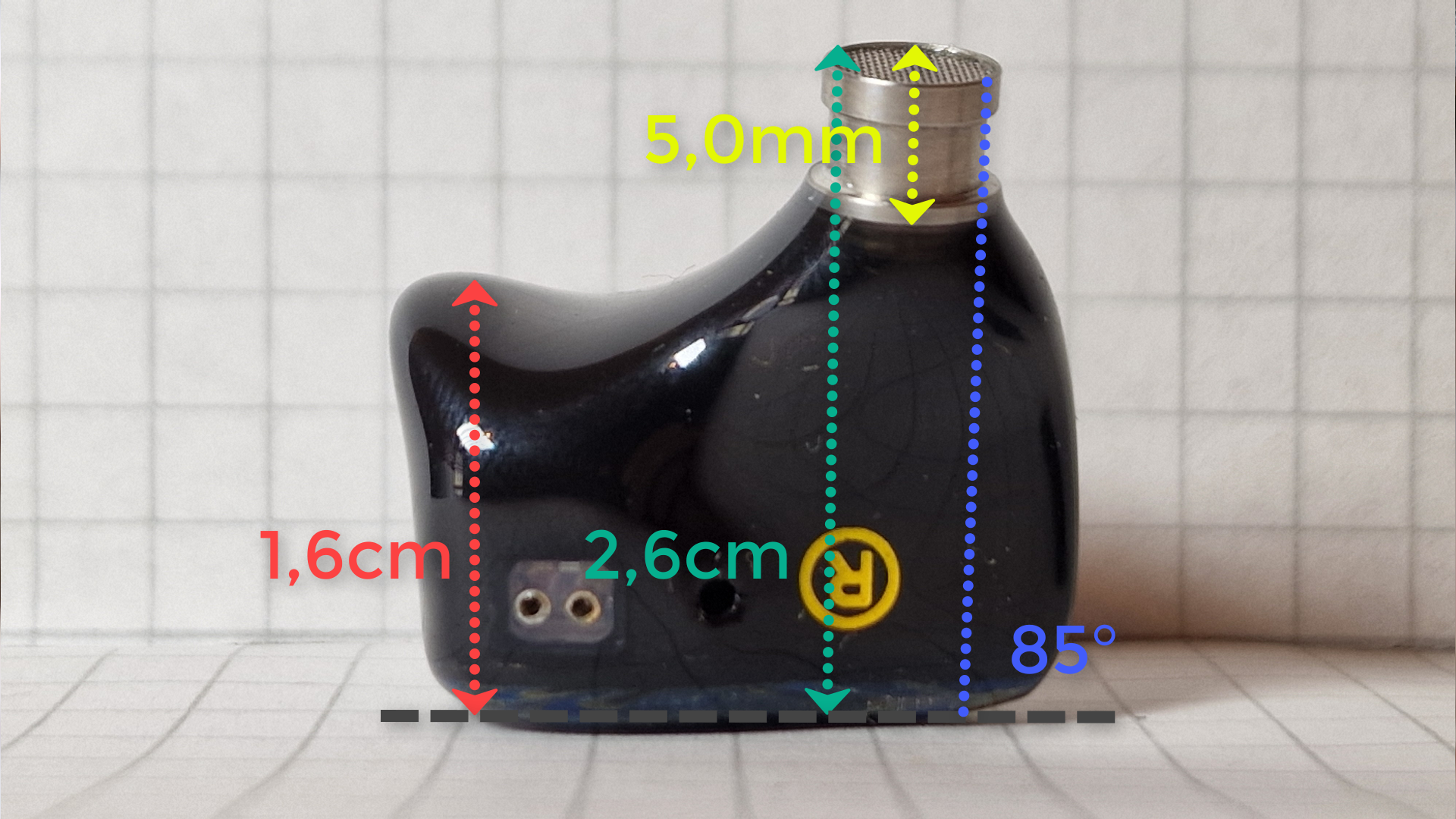
Positive things first, the shell is a good semi-custom shape that doesn’t angle too aggressively and therefore fits relatively well. However, it does insert rather deep and the nozzle also is rather wide so I had to use the smallest tips I had on hand. With that though, the comfort is good enough to good. If you have a smaller ear though, the IEM might be a bit big for you, which doesn’t look like it from the front as the contouring is rather aggressive, but my measurements clearly show that the IEM is actually rather big.
Isolation
With a semi-custom shell and deep insertion, I did expect this to isolate very well… But somehow in reality I was a bit disappointed here. Not that it isolates bad or anything, but to my ear, it just isolates slightly above average. The main reason for this might be that the nozzle and actual insertion is rather long and therefore does stand out of my ear more than e.g. the HS10. Also the relatively big pressure-hole might be a factor here.Meaning, without foam, I think this is just good enough for public transport. With foam it is for sure good enough and you can probably even use it on busy places, but I’d rather choose something else there if I’m honest.
Drivability
With 12Ω of impedance at 103dB, the Phoenixia is pretty efficient on paper and in reality too. It doesn’t take much to get most of what it is capable of: even the Apple dongle did well enough and with something like the UP5 I think you only get a marginally better imaging and a maybe slightly better bass punch. Overall I’d say you get about 90% of what this is capable of on your random dongle.Sound
General sound characteristic
The Phoenixia can be best described as U-shaped, leaning slightly in the v-shaped direction.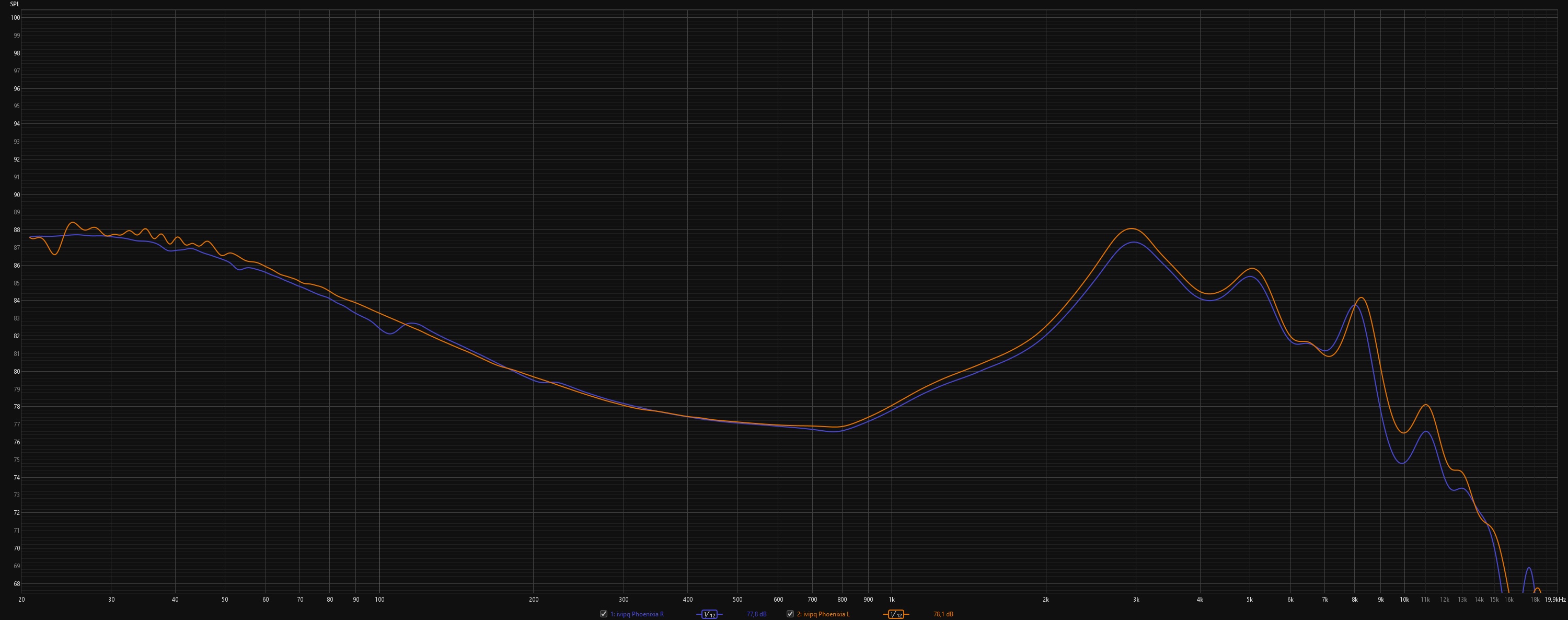
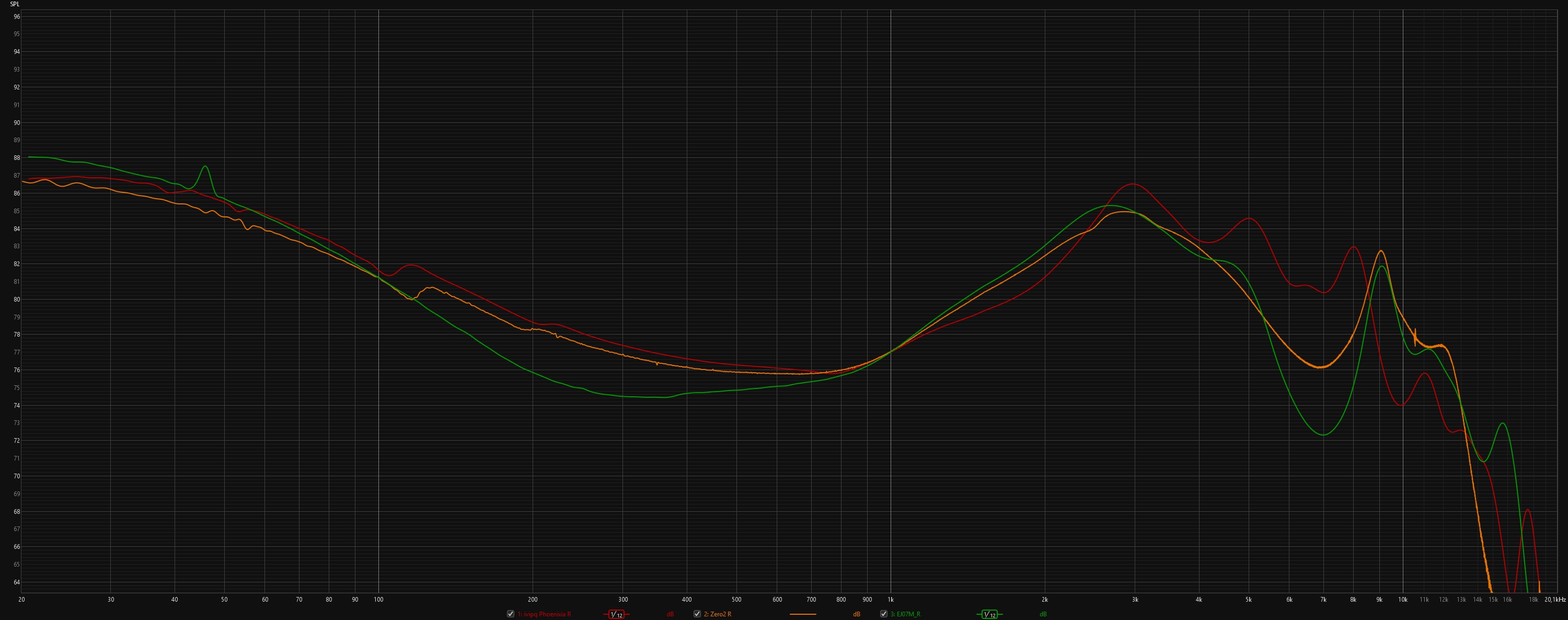
(Red = Phoenixia, Green = EJ07M, Orange = Zero2)
Treble
Probably my biggest complaint about the Phoenixia is the slight lack of upper-treble. Yes, the graph does indicate a kinda “natural” roll-off above 8k, but in reality I do think for this price there should be a bit “more” in this region. Meaning, sometimes I have the feeling I do miss some transients that I would get with some planar or other hybrid sets. But to be fair, there still seems to be some information here, it’s just not as much as I’d like.Mid treble on the other hand is basically flawless to my taste: bright-ish, very detailed without coming off as sharp at any point. I did enjoy some sharper synthwave as much as I did fusion jazz or metal.
The only potential issue I see here if you are sensitive to 5k: this has a 5k peak, but that is quite a bit lower than the 3k peak, therefore masking the 5k to my ear. But I’m also not that sensitive to 5k so your knowledge may vary.
Mids
Coming to the mids and I have good news here: while theres a light warmth going on through the lower-mids, I do not perceive it as “bleeding” and therefore the mids are nice and crisp while never coming of as “thin”. The Phoenixia seems to strike a good balance here where the bass shelf is mostly below 300Hz while having some bass reaching all the way to the mids. This combined with a good technicality makes the mids overall very enjoyable even in busy passages.Bass
As the graph indicates, the bass of the Phoenixia is very, very good. It punches, it slaps, it rattles and it hums all while never coming off as too bloated and intervening in the mids. I literally couldn’t find a single song where the Phoenixia didn’t work, from orchestral over jazz all the way to metal or synthwave, bass really is the star of the show here.
And that not only in terms of tonality, which is superb, but also in terms of technicality. It is fast enough, goes very low and combines with a good slap for everything you need. I also have to confess, I was a bit sceptical when I read “bio titanium DD” in combination with 2 BAs: this is a rather tricky setup to pull-off and even when I’m not convinced the BAs will do much. In theory, the slowest transducer in a setup for a specific frequency will dictate the decay and therefore the DD probably will “slow down” the BAs. In practice, though, I didn’t have the feeling I was missing anything in the bass department in terms of technicalities. Sure, some planars I have heard are faster and some DDs probably too, but overall I do think this is a very nice technical bass while not suffering of the “bass tuck” some people complain off when listening to e.g. the EJ07M.
Soundstage, Layering & Imaging
With an average soundstage, the Phoenixia isn’t really starting strong here. Meaning, there isn’t much room vertical or horizontal for sound to happen. Fortunately, layering and imaging make up for it: most of the time, you get 5 layers and the imaging is very good so you can even hear small sound cues happening in songs like Macabre Serenade very clearly from where they are supposed to come. This also extends to games and you can easily game hardcore shooter like Sandstorm or Hunt with this.
Separation, Dynamics & Coherence (including timbre)
One of the strongest points of the Phoenixia is the separation department: it does really well here and you do get most instrument lines cleanly separated from vocals or other instrument lines. Helping here probably is the good imaging and layering as well as the good tuning, but still very respectable performance here.
Dynamics are also good but not amazing: while definitively being on the better side then it comes to hybrid-IEM dynamics, it still lacks behind good single-DD sets.
Coherence also isn’t bad at all, even though I have to say theres some graininess happening in the treble and you do get a light BA timbre, but really it isn’t that noticeable in day-to-day listening.
Verdict
Coming with a very good cable, a good enough comfort, good build and a tuning that will probably satisfy most of people AND while having a good technical capability, I see no reason why to not recommend the Phoenexia. The only thing I’d like to see improved is the provided ear-tips, as they aren’t that great and the Xinhs/Ivipq own tips are a not the best choice for an IEM with a nozzle this long.
The only real reason I can see why to not buy this IEM is the upper treble: it definitively lacks behind what you usually get at this price range and therefore costs some details.
But really, this is not a big deal and overall I did enjoy my time with the Phoenixia very much and therefore will recommend it, even though there aren’t many reports on whether the QC is good or bad.

